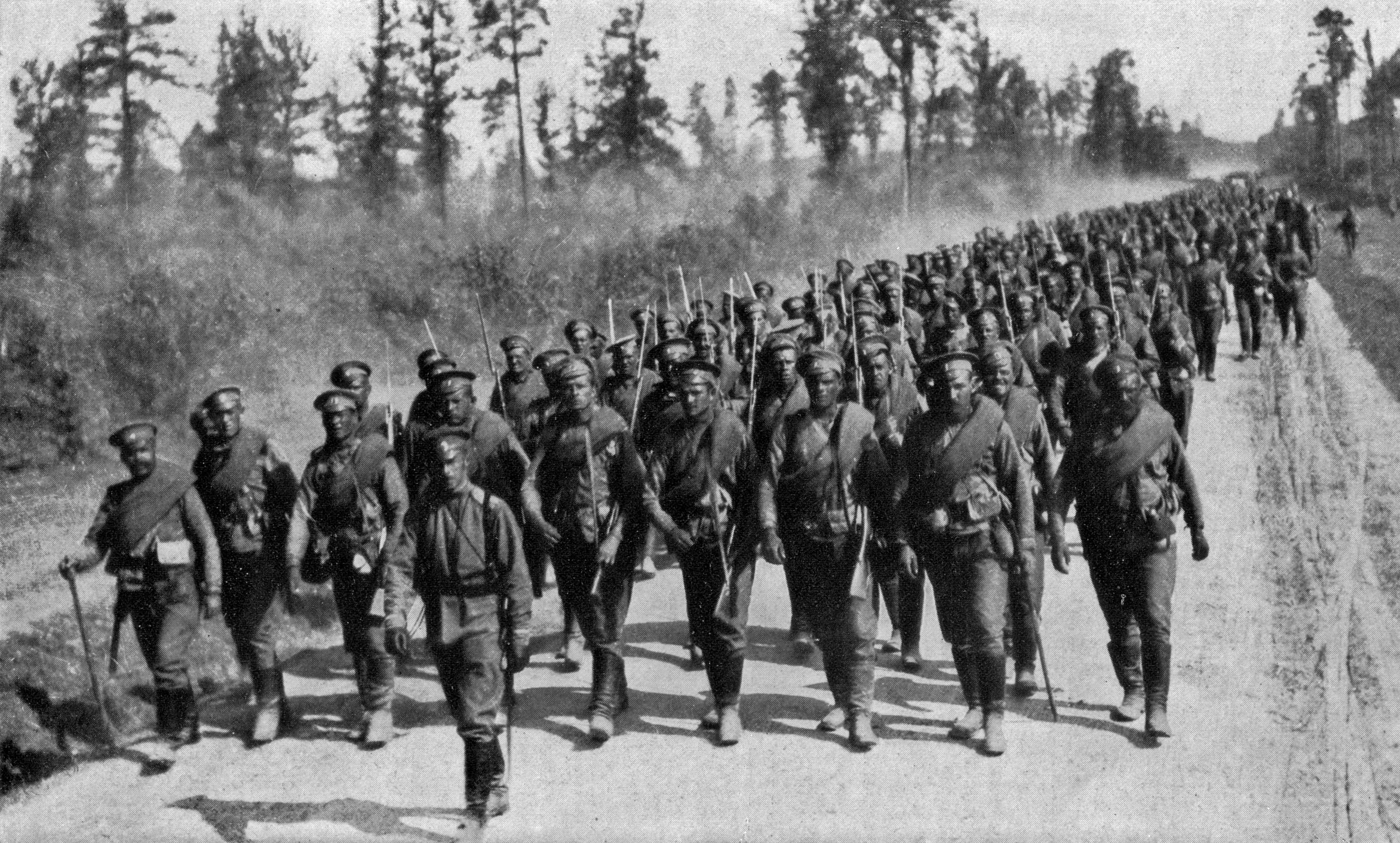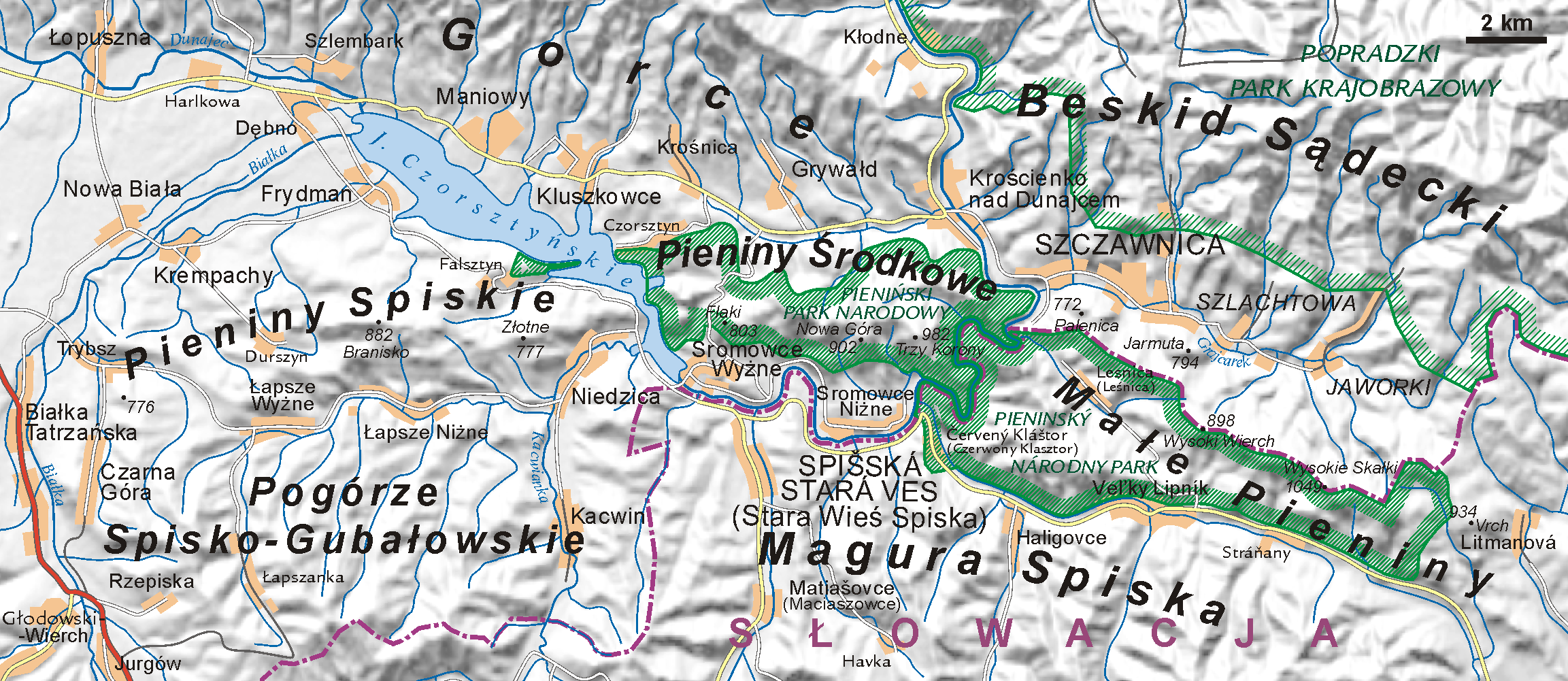|
Battle Of Łowczówek
Battle of Łowczówek was a battle during World War I, fought on 22–25 December 1914 at Łowczówek, between the First Brigade of the Polish Legions, fighting for Austria-Hungary, and troops of Imperial Russia. The First Brigade was supported by some units of Hungarian infantry and Austrian artillery. The Austro-Hungarian-Polish forces held back the developing Russian offensive in the region, which allowed the bulk of the Austrian army to avoid being surrounded and to withdraw, but had to yield their positions in the face of continued Russian attacks and the danger of being encircled itself. Background In the first phase of the war, Russian Empire wanted to knock Austria-Hungary out of the conflict. To achieve this, the Russians invaded Galicia. By November 1914, they had captured Tarnów and Tuchów, and moved westwards, to Kraków. In December 1914, the Russians, who were divided into two armies (those of Generals Aleksei Brusilov and Radko Dimitriev), were stalled in ... [...More Info...] [...Related Items...] OR: [Wikipedia] [Google] [Baidu] |
Eastern Front (World War I)
The Eastern Front or Eastern Theater, of World War I, was a theater (warfare), theater of operations that encompassed at its greatest extent the entire frontier between Russian Empire, Russia and Kingdom of Romania, Romania on one side and Austria-Hungary, Kingdom of Bulgaria, Bulgaria, the Ottoman Empire, and German Empire, Germany on the other. It ranged from the Baltic Sea in the north to the Black Sea in the south, involved most of Eastern Europe, and stretched deep into Central Europe. The term contrasts with the Western Front (World War I), Western Front, which was being fought in Belgium and French Third Republic, France. Unlike the static warfare on the Western Front, the fighting on the geographically larger Eastern Front was maneuver warfare, more dynamic, often involving the flanking and encirclement of entire formations, and resulted in over 100,000 square miles of territory becoming occupied by a foreign power. At the start of the war Russia launched offensives agai ... [...More Info...] [...Related Items...] OR: [Wikipedia] [Google] [Baidu] |
Imperial Russia
Imperial is that which relates to an empire, emperor/empress, or imperialism. Imperial or The Imperial may also refer to: Places United States * Imperial, California * Imperial, Missouri * Imperial, Nebraska * Imperial, Pennsylvania * Imperial, Texas * Imperial, West Virginia * Imperial, Virginia * Imperial County, California * Imperial Valley, California * Imperial Beach, California Elsewhere * Imperial (Madrid), an administrative neighborhood in Spain * Imperial, Saskatchewan, a town in Canada Buildings * Imperial Apartments, a building in Brooklyn, New York * Imperial City, Huế, a palace in Huế, Vietnam * Imperial Palace (other) * Imperial Towers, a group of lighthouses on Lake Huron, Canada * The Imperial (Mumbai), a skyscraper apartment complex in India * Imperial War Museum, a British military museum and organisation based in London, UK * * Imperial War Museum Duxford, an aviation museum in Cambridgeshire, UK * * Imperial War Museum Nort ... [...More Info...] [...Related Items...] OR: [Wikipedia] [Google] [Baidu] |
Biała (Dunajec)
Biała is a river in eastern central Poland, a right tributary of the Dunajec, which it meets in the town of Tarnów. Arising in the Laborec Highlands of Slovakia Slovakia, officially the Slovak Republic, is a landlocked country in Central Europe. It is bordered by Poland to the north, Ukraine to the east, Hungary to the south, Austria to the west, and the Czech Republic to the northwest. Slovakia's m ...,https://gq.pgi.gov.pl/article/download/8537/pdf_603 (pdf, Polish language) the river flows through the Polish towns of: * Zakopane * Poronin * Biały Dunajec * Szaflary * Nowy Targ Among its own tributaries is the Wątok. References Rivers of Poland Rivers of Lesser Poland Voivodeship {{Poland-river-stub ... [...More Info...] [...Related Items...] OR: [Wikipedia] [Google] [Baidu] |
Chojnik, Lesser Poland Voivodeship
Chojnik is a village in the administrative district of Gmina Gromnik, within Tarnów County, Lesser Poland Voivodeship, in southern Poland. It lies approximately south of Tarnów and east of the regional capital Kraków , officially the Royal Capital City of Kraków, is the List of cities and towns in Poland, second-largest and one of the oldest cities in Poland. Situated on the Vistula River in Lesser Poland Voivodeship, the city has a population of 804,237 .... References Villages in Tarnów County {{Tarnów-geo-stub ... [...More Info...] [...Related Items...] OR: [Wikipedia] [Google] [Baidu] |
Gromnik, Lesser Poland Voivodeship
Gromnik is a village in Tarnów County, Lesser Poland Voivodeship, in southern Poland. It is the seat of the gmina (administrative district) called Gmina Gromnik. It lies approximately south of Tarnów and east of the regional capital Kraków , officially the Royal Capital City of Kraków, is the List of cities and towns in Poland, second-largest and one of the oldest cities in Poland. Situated on the Vistula River in Lesser Poland Voivodeship, the city has a population of 804,237 .... References Villages in Tarnów County {{Tarnów-geo-stub ... [...More Info...] [...Related Items...] OR: [Wikipedia] [Google] [Baidu] |
Nowy Sącz
Nowy Sącz (; ; ; ; ) is a city in the Lesser Poland Voivodeship of southern Poland. It is the district capital of Nowy Sącz County as a separate administrative unit. With a population of 83,116 as of 2021, it is the largest city in the Beskid Sądecki Region as well as the third most populous city in the Lesser Poland Voivodeship. Names Nowy Sącz has been known in German language, German as ''Neu Sandez'' (older spelling ''Neu Sandec'') and in Hungarian language, Hungarian as ''Újszandec''. The Rusyn name was Novyj Sanc. Its Yiddish language, Yiddish names include צאַנז (''Tsanz'') and נײַ-סאַנץ (''Nay-Sants''). History Nowy Sącz was founded on 8 November 1292 by the Polish and Kingdom of Bohemia, Bohemian ruler Wenceslaus II of Bohemia, Wenceslaus II, on the site of an earlier village named Kamienica. The foundation of Nowy Sącz took place due to the efforts of Archbishop of Kraków, Bishop of Kraków, , who owned Kamienica. Upon request of the bishop, Wencesl ... [...More Info...] [...Related Items...] OR: [Wikipedia] [Google] [Baidu] |
Łowczów
Łowczów is a village in the administrative district of Gmina Tuchów, within Tarnów County, Lesser Poland Voivodeship, in southern Poland. It lies approximately north-west of Tuchów, south of Tarnów, and east of the regional capital Kraków , officially the Royal Capital City of Kraków, is the List of cities and towns in Poland, second-largest and one of the oldest cities in Poland. Situated on the Vistula River in Lesser Poland Voivodeship, the city has a population of 804,237 .... References Villages in Tarnów County {{Tarnów-geo-stub ... [...More Info...] [...Related Items...] OR: [Wikipedia] [Google] [Baidu] |
Dunajec
The Dunajec (; Goral dialects: ''Dónajec''; ) is a river running through northeastern Slovakia and southern Poland. It is also regarded as the main river of the Goral Lands. It is a right tributary of the Vistula River. It begins in Nowy Targ at the junction of two short mountain rivers, Czarny Dunajec and Biały Dunajec (Black and White Dunajec). Dunajec forms the border between Poland and Slovakia for in the Pieniny Środkowe (Slovak: Centrálne Pieniny) range, east of the Czorsztyn reservoir. Geography The Dunajec is long, including its source river Czarny Dunajec,Statistical Yearbook of the Republic of Poland 2017 [...More Info...] [...Related Items...] OR: [Wikipedia] [Google] [Baidu] |
Battle Of Limanowa
The Battle of Limanowa-Łapanów took place from 1 December to 13 December 1914, between the Austro-Hungarian Army and the Russian Army near the town of Limanowa ( south-east of Kraków). The Austro-Hungarian high command had assumed that the German success would weaken Russian forces in the north and that the Galician front would remain quiet. Both these assumptions were incorrect. Though the Habsburg 2nd army offensive opened on 16 November and met early success, the Russians proved stronger than expected and their 4th Army yielded little ground. Meanwhile, further south the Russian 2nd Army advanced across the San river and moved into the Tarnów area by 20 November. Further north, the Habsburg 4th Army, supported by the 47th German Reserve Division, moved onto the offensive in the last days of November. In fierce battles around the towns of Łapanów and Limanowa, the Russian 3rd Army was beaten and forced to retreat east, ending its opportunity to reach Kraków. To ... [...More Info...] [...Related Items...] OR: [Wikipedia] [Google] [Baidu] |
Aleksei Brusilov
Aleksei Alekseyevich Brusilov (, ; rus, Алексей Алексеевич Брусилов, p=ɐlʲɪkˈsʲej ɐlʲɪkˈsʲejɪvʲɪdʑ brʊˈsʲiɫəf; – 17 March 1926) was a Russian and later Soviet general most noted for the development of new offensive tactics used in the 1916 Brusilov offensive, which was his greatest achievement. Born into an aristocratic military family, Brusilov trained as a cavalry officer, but by 1914 had realized that cavalry was obsolete in an offensive capacity against modern weapons of warfare such as mass adoption of rifled guns, machine guns, and artillery. He is considered a very outstanding general who won many battles against the Austro-Hungarian army. His offensive in 1916 was the final major success of the Tsarist army. In the government, this offensive meant the transfer of the strategic initiative to the Russians and the beginning of preparations for the general offensive of 1917, which, however, was disrupted by the revolution. ... [...More Info...] [...Related Items...] OR: [Wikipedia] [Google] [Baidu] |
Kraków
, officially the Royal Capital City of Kraków, is the List of cities and towns in Poland, second-largest and one of the oldest cities in Poland. Situated on the Vistula River in Lesser Poland Voivodeship, the city has a population of 804,237 (2023), with approximately 8 million additional people living within a radius. Kraków was the official capital of Poland until 1596, and has traditionally been one of the leading centres of Polish academic, cultural, and artistic life. Cited as one of Europe's most beautiful cities, its Kraków Old Town, Old Town was declared a UNESCO World Heritage Site in 1978, one of the world's first sites granted the status. The city began as a Hamlet (place), hamlet on Wawel Hill and was a busy trading centre of Central Europe in 985. In 1038, it became the seat of King of Poland, Polish monarchs from the Piast dynasty, and subsequently served as the centre of administration under Jagiellonian dynasty, Jagiellonian kings and of the Polish–Lithuan ... [...More Info...] [...Related Items...] OR: [Wikipedia] [Google] [Baidu] |
Tuchów
Tuchów is a town in Tarnów County, Lesser Poland Voivodeship, Poland, with a population of 6,476 (2004). It lies on the ''Biała'' river, at the height of above sea level. The distance to Kraków is , and to the border with Slovakia, approximately . The town is located on an electrified rail line from Tarnów towards Nowy Sącz and the Polish - Slovak border. History The first historical note about Tuchów dates back to 1105. A document of papal legate Gilles de Paris tells us that the village had been given to the Tyniec Benedictine Abbey by Władysław Herman’s wife. A prosperous salt mine operated here at the turn of the 13th and 14th centuries, which caused King Casimir III the Great to grant Magdeburg rights to Tuchów in 1340. Polish writer Jan Długosz wrote in his ''Chronicles'' about the development of local artisan guilds: flourmills, carpenters, blacksmiths and furriers. By the 17th century, the town became rich by making profits from different crafts, salt ... [...More Info...] [...Related Items...] OR: [Wikipedia] [Google] [Baidu] |





